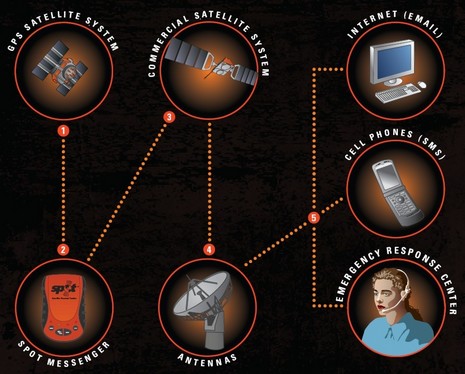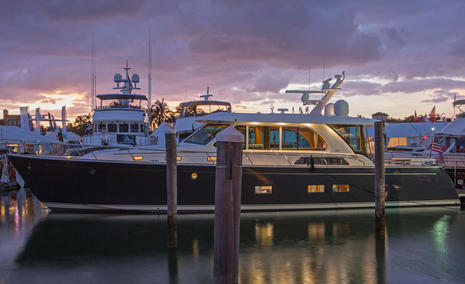SPOT’s call center, a bunker near Houston!

My PMY March column about SPOT is now online, and you’ll see that I gave the company guff for what I thought was “hyped-up fear marketing.” But in fact, they’ve toned that down quite a bit recently. The “Live to tell about it” tag line is still around, but the home page closeup of the toothy, drooling bear and the lame homilies—like the one about coming home in coach instead of in cargo—have vanished. I’d like to think I had something to do with it, but more likely is the marketing realization that Spot’s real draw is its ability to do tracking and non-distress messaging.
It’s easy to make the argument, as I did, that a PLB is a more reliable distress device, and costs about the same over time. However, there’s an interesting exception for people adventuring in the third world. That’s because Spot’s private rescue center operator, GEOS Alliance, can purportedly help you out in ways that many official third world SAR operations can not. Like helicopter extraction! Plus it’s only another $8 on top of your annual $99 Spot subscription to get $100,000 worth of such private rescue service.
Finally, in the course of my research I heard—though never confirmed now confirmed—that GEOS’s 24/7/365 emergency call center is located in a weird old fallout shelter outside Houston, Texas. The story goes that the gigantic bunker was built in the early 80s by a Taiwanese oil mogul fearful of a Chinese nuclear attack, but now it’s being used by companies who need a super-secure control center. Let me be clear that if you use SPOT’s 911 button in the U.S., the call center is going to handle it just as the SARSAT center would; if you’re on a boat the USCG will be alerted. But if, say, you’re cruising off Somalia the operatives working deep under the “pagodas” in Montgomery, Texas, may have you extracted by chopper. I doubt that you’ll also get served a perfect martini, but isn’t there a James Bond ring to the whole deal? Have a good weekend!
(For more Panbo SPOT coverage, start here and work backwards.)















Ben,
You might want to qualify the response by GEOS Alliance. According to their web site the $8 fee is good if you sign up when you first initialize
the SPOT. (I believe the usual fee is $150 a year.) Will this go up in subsiquent years?
From the GEOS web site:
“The scope of GEOS SAR benefits includes payment, by GEOS, of up to $100,000 in any one year, limited to $50,000 any one incident, for the provision of necessary additional Search and Rescue resources (including helicopter, aircraft, private search teams etc.) up to the single incident limit for a period not exceeding 72 hours from the time of call for assistance where these are requested by the appropriate rescue authorities and which are necessary to prevent injury or illness or danger to human life as a result of an unforeseeable emergency or to pay for any costs and
expenses claimed against you by the appropriate rescue authorities.
Provision of additional resources under this service must be first authorized by GEOS.
PLEASE NOTE This benefit does not apply if:-
a) your situation is caused by circumstances such as a forecast change of weather conditions, which could reasonably have been anticipated at the
date you started your trip
b) you have NOT made adequate provision of resources or training or competence needed to complete your planned trip.
c) In the case of death of the Member, GEOS will not be responsible for the transportation of the body
d) GEOS will endeavour to arrange a successful rescue but cannot accept liability for failed rescues due to unforeseen circumstances beyond their
control.”
$50,000 does not go very far in SAR once aircraft are involved. There is a 72 hour limit and the requirement of “requested by the appropiate authorities”. I still wonder how good their track record will be in remote
areas. The coast Guard is fairly straight foreward. But many of us boat on remote lakes or hike in remote areas.
SPOT takes the Wall Street Journal 2008 Technology Innovation Award in the category of consumer electronics. Way to go SPOT.
I do believe that so far, everyone that has been rescued has not had to pay any additional costs.
Maybe that will suffice for now. I am sure that if they had, someone would have complained.
Also, I don’t think people should use the SPOT as a reason to go taking extra risks just because they can press a button and get rescued.
The SPOT is simply an insurance policy and $8 for lifetime policy, if you were smart/frugal enough to by it at that price, for something that could cost you your life isn’t bad. If I made a bad judgement call and had to be rescued, I would still rather pay the cost after I was rescued than just die because I was cheap.